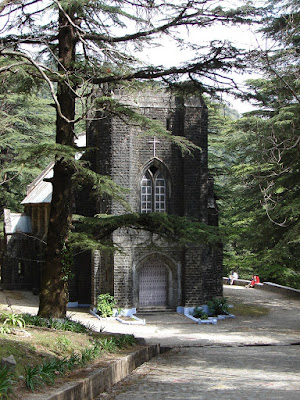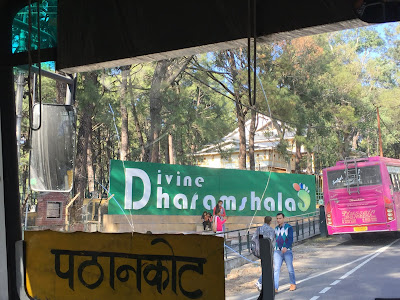The Colonial Legacy of McLeod Ganj
 |
| Image from Wikipedia |
Talking of McLeod Ganj, what greater testimony of a colonial hangover could there be if not the name itself! URBScribbles tells a story here of McLeod Ganj’s glorious colonial past and a fading memory of the same.
The administrative habit of the colonisers to name places for the colonised subjects after their own names was, so to say, their way of letting the world know that something has been discovered and brought down to terms. That vast stretches of nondescript land in greater parts of the world are waiting to be discovered, labeled, categorised and formalised by the “white men”. And this in itself was one way of justifying the “white man's burden”.
Named after a British Lieutenant Governor of Punjab, Donald Friell McLeod, McLeod Ganj sustains the colonial heritage in its very name. In the post-independence drive of restructuring and finding a new identity for itself, the newly born nation-state made quick attempts to rename many old places to various purs, nagars, baads etc. Decades after the official pack-up of the Raj from India, few things, however, remain unchanged. Some names engraved so deeply into the consciousness that they appear to be ever-existent. McLeod Ganj, for that matter, is definitely one of them.
The Imperial Gazetteer of India mentions in the context of Dharamshala:
A site was found on the slopes of the Dhaola Dhar, in a plot of wasteland, upon which stood an old Hindu rest house, or dharamshala, whence the name adopted for the new cantonment.
Following the Anglo-Sikh wars, the region around Kangra had more or less come under British rule by mid of the 1840s. Present-day Dharamshala, of which McLeod Ganj is a tiny suburb, was formed originally as a subsidiary cantonment of the British troops stationed at Kangra. It was officially occupied as a station in 1849, to accommodate a Native regiment that was being raised in the district. With it came residential quarters for the regimental officers. The civil authorities started pouring in eventually and by 1855 British architectural splendor begun drawing up liveable contours all over the place. The time was by now ripe for two such landmarks to come to life which was to remain grounded for times to come as a legacy and memory of the times that have gone.
Surviving the devastating earthquake of 1905 - which made the European extravagance around the place a thing of past overnight - the church of St. John in the Wilderness and the Nowrojee & Son, General Merchants, stay grounded till date.
To cater to the spiritual and religious needs of the small yet considerable number of Europeans that had by then populated the area, a church was to be immediately built up. Thus came the St. John in the Wilderness Church at Forsyth Ganj to the right of the road for one traveling uphills towards McLeod Ganj. Built in the European Neo-gothic architecture, dedicated to John the Baptist, it came up in the midst of a dense canopy of deodars in 1952. The church became even more popular sometime around 1961 with the arrival in India of the new British Viceroy and Governor-General, Lord Elgin. Popular stories narrate the extraordinary attachment that the Viceroy had with the place. His desire to make the place the summer capital of the brightest jewel in the British crown. As a testimony of this attachment, it was later decided to lay down a memorial in his commemoration in the church compound. Elgin breathed his last in 1863 and was buried there and his wife donated the Belgian stained-glass panes for the windows of the building.
Surviving the devastating earthquake of 1905 - that striped McLeod Ganj off most of the European buildings around the area in a jiffy - St. John in the Wilderness stands up to date. Decades after the demise of the colonial rule, the church with Elgin buried in the vicinity screams out loud the tales of a time long gone. Of the serenity and extravagance of a time when Dharamshala went so close to the opportunity of becoming the summer capital of India at that time.
The genealogy and tale of the Nowrojee’s shall be taken up in a subsequent story.






Comments
Post a Comment